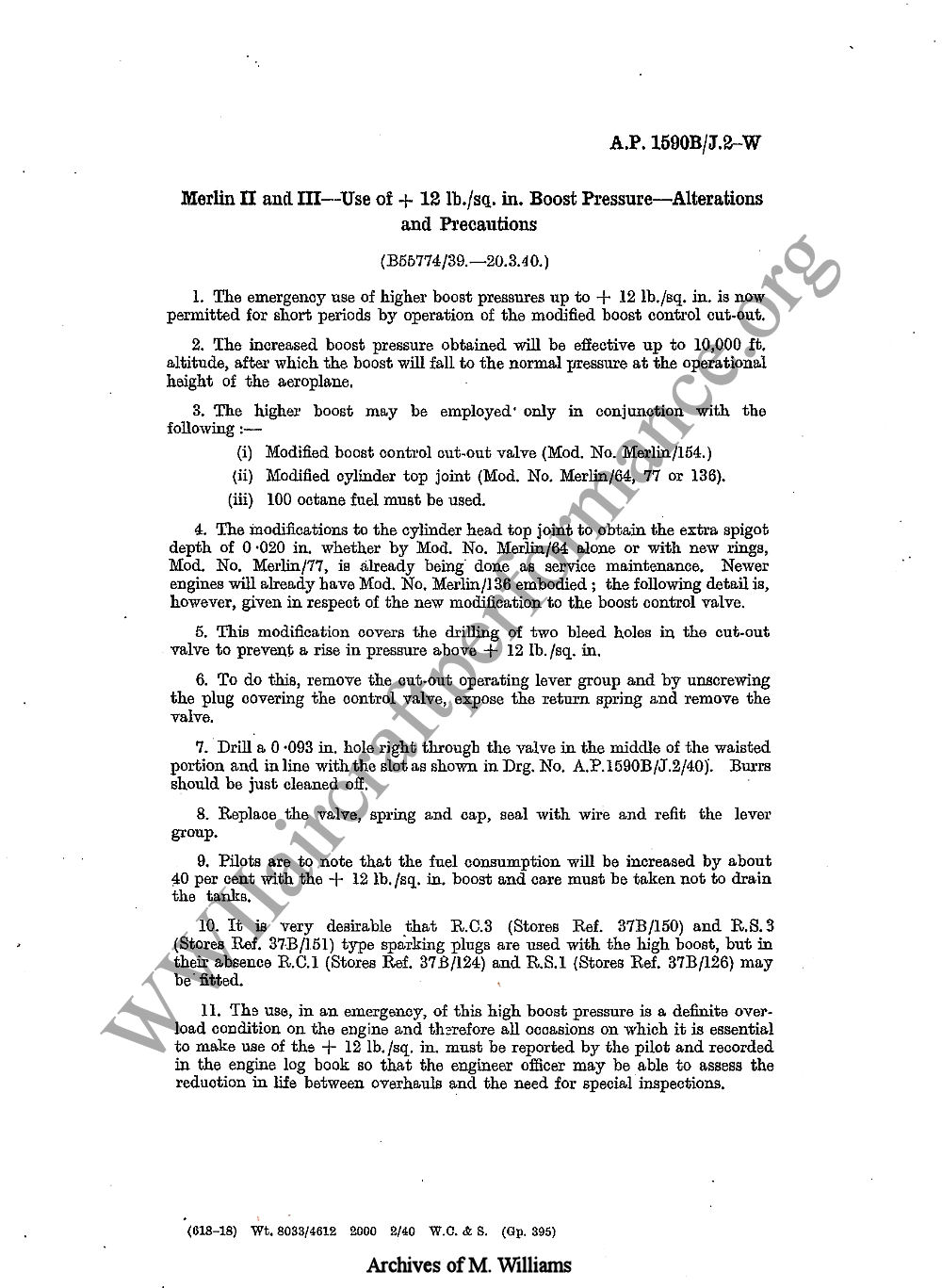
 |
|
|||||||
| FM/DM threads Everything about FM/DM in CoD |
 |
|
|
Thread Tools | Display Modes |
|
|
|
#1
|
||||
|
||||
|
Sounds like that's an extreme case to me Kurf. I've looked at a few of them, but so far:
Last edited by TheGrunch; 04-04-2011 at 01:15 AM. |
|
#2
|
|||
|
|||
|
Why would they use 100 octane fuel to run in a engine? If it was as scarce as you would have us believe surely they would have used 87oct for non operational purposes.
|
|
#3
|
|||
|
|||
|
because there was a conversion process that wasn't exactly trivial. further engine testing would be done at the levels the engine was expected to run at. you wouldn't test an engien you planned to run on 100 octance with 87 octance.
etc. |
|
#4
|
||||
|
||||
|
It's definitely sensible to run-in engines at their 5-minute limit boost levels.

|
|
#5
|
|||
|
|||
|
because that was the only difference right?
|
|
#6
|
||||
|
||||
 These were the alterations made (dated March 20th 1940). After the alteration the only difference in actual operation was the modified boost cut-out control allowing the ability of the engine to be run on 100 octane fuel up to +12lbs. sq. in. The engine was still perfectly capable of being run on 87 octane fuel and indeed this would avoid the problem of lead fouling of the spark plugs if they had not been changed to the new ones. You will note the last paragraph. Mechanics were not likely to run the engine up to +12lbs on the ground. Its use significantly reduced engine life. Last edited by TheGrunch; 04-05-2011 at 08:59 AM. |
|
#7
|
|||
|
|||
|
Since the FTH for +12 was 10,000 feet or so, it would be pretty reckless not to ground test at +12 to ensure that Mod. No. Merlin/154 was embodied correctly given that it was a local mod; otherwise there would be no guarantee that +12 might not be exceeded, leading to rapid failure in flight.
Reverting to 87 octane would require that the 87 octane limits be observed; since operation of the cutout would now give +12 it would probably be wired shut; clearly in this condition the aeroplane would not be exactly combat ready. Having filled the tanks with 87 octane again, they would probably require cleaning when reverting to 100 octane to ensure that the fuel reaching the engine met the performance standard. Changing fuel is not quite so small an undertaking as many would imagine; aeroplanes are less forgiving than cars, and the consequences of engine failure are inevitably more severe. |
|
#8
|
|||
|
|||
|
Quote:

__________________
Il-2Bugtracker: Feature #200: Missing 100 octane subtypes of Bf 109E and Bf 110C http://www.il2bugtracker.com/issues/200 Il-2Bugtracker: Bug #415: Spitfire Mk I, Ia, and Mk II: Stability and Control http://www.il2bugtracker.com/issues/415 Kurfürst - Your resource site on Bf 109 performance! http://kurfurst.org 
|
|
#9
|
||||
|
||||
|
Definitely agreed there. As it was stated earlier in the thread there was a lot of movement to and from forward bases which seems to have been the bulk of the non-operational flying for operational squadrons, particularly for squadrons flying into and out of Manston due to its exposed nature on the coast I suppose.
|
|
#10
|
||||
|
||||
|
Hi, Kurfurst the page you linked showing 54 squadron on training flights was during one of the times they were posted north to Catterick on a rest period.
54 squadron had 3 rest periods north, once after Dunkirk, once in june and once end of july/start of aug if memory serves me right. Catterick was not an operational base during BoB, being well up north, one can only speculate at what fuel was being used there. It would seem logical that 100 octane was not really needed there.... Last edited by fruitbat; 04-05-2011 at 06:07 PM. |
 |
|
|